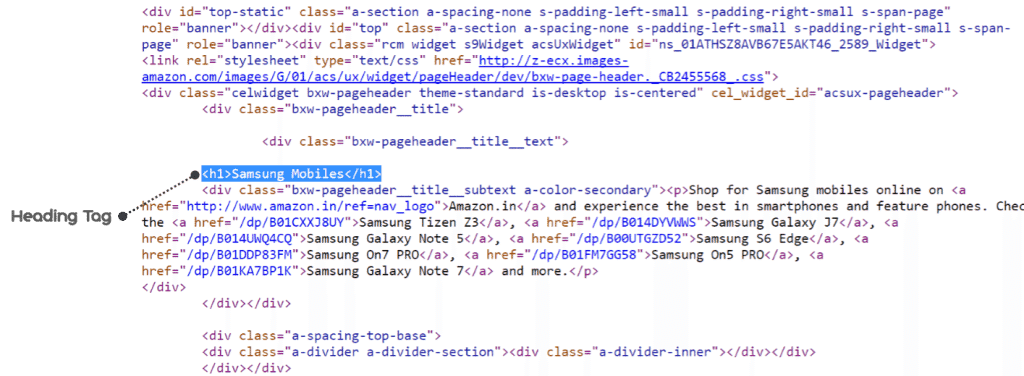Heading Tag
What are Heading Tags?
Most site owners don’t know the difference between title tags and heading tags and confuse them as being one and the same. However, heading tags are different as they help create visitor-friendly content which enhances user experience. They are popularly known as H1 tags which are the top level heading tags. There are 6 levels of heading tags, H6 being the lowest level. SEO professionals make use of heading tags to ensure that the content on your webpage is displayed correctly which specifies to search engines what that particular webpage is all about. It also helps the visitors to find what they are looking for.

Why Are Heading Tags Important?
Search engine crawlers index your webpages from time to time and there are certain tags that provide them with the information that is available on that particular page. Crawlers are meticulously looking out for heading tags that would display information about what your page content is about. The H1 tag is given top priority and, therefore, it makes it easier for the search engine crawler to classify content accordingly.
Online visitors scan through various options that they find on search engine result pages. This means your webpage only has seconds to gain a visitor’s attention. Content that is incorporated in heading tags appear in bold on the search engine result pages. This allows users to quickly view the content at a glance and then decide to stay longer and read for more details.
Heading tags also make your webpage content more readable and provide a better flow to the content that enhances the user experience.
Best Practices for Writing Heading Tags
Heading tags can influence your site ranking and, therefore, you need to be careful when you are incorporating them into your website. There are certain factors that you need to keep in mind which will allow you to optimize your website in the right way and get the most out of your SEO activity.
H1 tag or heading tag is an important indicator for search engines, so it is recommended to use only one heading tag per post. Don’t incorporate too many in your content as it may backfire.
Using the right keyword in the heading tag can improve the site ranking. If the keyword that you have used in your heading tag does not appear anywhere in the content, you’re not optimizing the content to the fullest to make it visible in the search. However, don’t overstuff the title with too many keywords. Use keywords organically and naturally in the title of your content to make it appealing.
Your heading tag should be persuasive and convincing enough to garner the visitor’s attention when they are on the search engine result pages. Whatever you enter in the H1 tag will appear in bold on the search result page and if it is appealing you can get more click-through rates and gradually your site ranking will improve.
